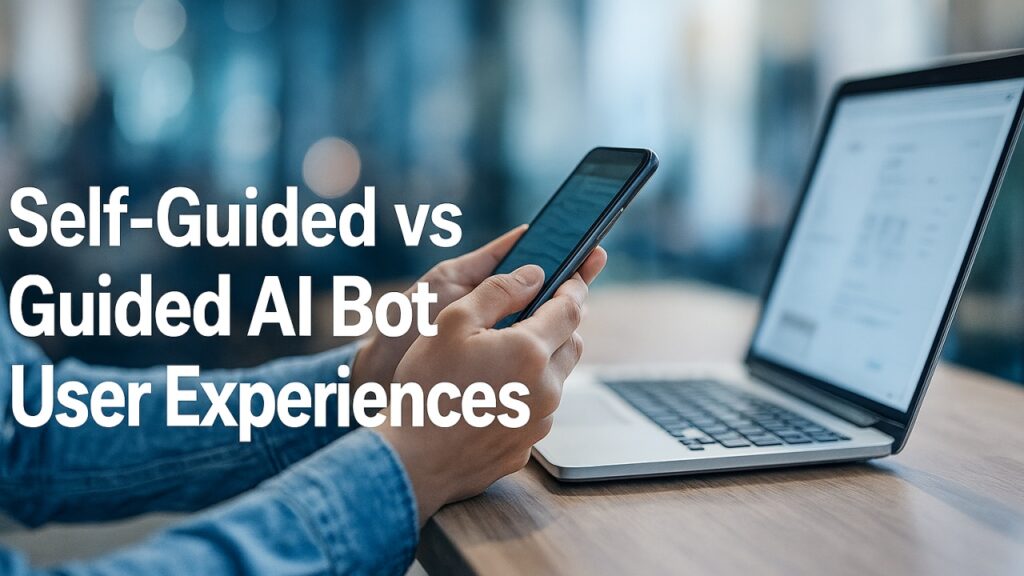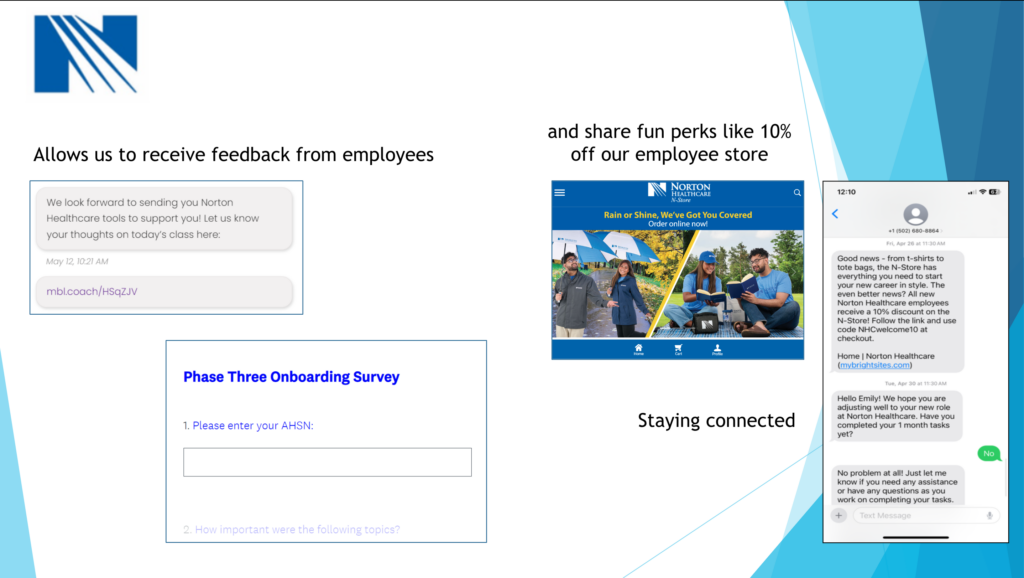When a learner takes a traditional e-learning course, their experience is fully guided. They can only click “Next,” follow prompts, or wait for a video to finish before moving on — every step intentionally designed and controlled by the instructional designer.
With AI bots and conversational interfaces, that structure disappears. Gone are the menus, buttons, and visual cues that once shaped the user journey. This freedom introduces a new design challenge: how to balance the open-ended nature of conversational AI with the organization’s need to guide the experience.
Self-guided AI tools like ChatGPT are powerful for exploration, but they depend entirely on what the user asks. The result can vary wildly from person to person. Guided AI bots, by contrast, are intentionally structured — delivering consistent, measurable outcomes aligned with an organization’s goals.
What Does a Guided AI Bot Look Like?
A guided AI bot is designed intentionally—proactive, structured, and contextually aware. Examples include:
- Sending proactive text message tips to help a new hire onboard more effectively.
- Delivering microlearning lessons about product features for sales reps with videos and quizzes.
- Coaching a customer service representative through the proper protocol for processing a return from an angry customer.
- Stepping a warehouse worker through a safety checklist before moving a heavy object.
The examples go on and on. Organizations need guided experiences because they ensure:
- Consistency and Measurability – Every user receives a structured experience that can be tracked, analyzed, and improved, unlike self-guided AI where results vary by user and prompt.
- Accountability – Engagement, completion, and learning outcomes can be reliably measured and reported.
- Scalability – Proven practices can be replicated across large audiences with minimal additional effort.
- Compliance – All interactions stay within approved content, tone, and policy boundaries.
Designing Guided AI Bot Experiences
1. Managing Conversational Flow
In guided experiences, the designer still needs to anticipate when a user might stray from the intended path. Even in a structured learning flow, human behavior is unpredictable—people get distracted, go off topic, or fail to complete the expected next step.
Imagine a microlearning bot walking a learner through a short training module. The bot sends the first video and says:
“Here’s the first short video. When you’re done, just type ‘Next’ to continue.”
But instead of typing “Next,” the learner might say:
“That was funny!” or “Can I skip this part?” — or worse, say nothing at all.
Without proper conversational design, the experience ends prematurely, leaving the learner mid-lesson. A guided AI bot should include the logic to recover. After a brief pause or period of inactivity, it can follow up with:
“Hey, just checking in — are you ready for the next video?” or “Looks like you might have gotten sidetracked. Want to continue where we left off?”
This kind of intent management and recovery ensures the learning experience continues as designed, maintaining both flow and engagement.
2. Managing Proactive Messaging
Unlike self-guided bots that respond only when prompted, guided bots can initiate conversations. This capability—especially on messaging platforms like Teams, Slack, WhatsApp, or SMS—enables proactive engagement.
The timing and logic behind proactive messages must be carefully designed. They can be:
- Scheduled: A campaign sending reminders every Tuesday afternoon.
- User-Triggered: A follow-up message based on user consent (“You asked me to check in with you today”).
- Data-Driven: A message triggered by external systems (“Your course completion deadline is approaching”).
These proactive touches transform the bot from a passive tool into an active coach.
3. Keeping the Conversation Within Guardrails
A hallmark of guided experiences is that the bot operates within defined parameters—its purpose, tone, and knowledge base are all controlled. For example:
- A leadership coach bot uses only the organization’s proprietary leadership model.
- A sales enablement bot references the company’s approved product specs and competitive positioning.
This structured approach ensures quality, compliance, and brand alignment—something a self-guided tool like ChatGPT cannot guarantee.
4. Maintaining a Persistent User Profile
A guided bot remembers you and builds a relationship.
Each user interaction contributes to a persistent profile that stores attributes like job role, competencies, goals, team relationships, and chat history. This context allows the bot to tailor its tone, recommendations, and follow-ups—just like a human coach who knows your progress over time.
5. Managing Data Sources and Integrations
Guided bots are designed for secure enterprise integration. They can connect to internal systems like CRM, HRIS, LMS, calendar, or email while adhering to company privacy and security policies. This creates a closed, compliant ecosystem where data is both useful and protected.
6. Managing User Access and Roles
Unlike public chatbots, guided bots allow organizations to control access and user roles. For example:
- A product information bot can tailor responses differently for customer type, distributors, and internal sales reps.
- A career development bot can offer different content based on job level.
This ensures each user receives information appropriate to their identity and permissions.
Conclusion: Why Guided AI Bots Matter
Self-guided AI tools like ChatGPT are great for exploration and creativity, but they lack the structure, context, and accountability organizations need for consistent performance and compliance. Their open-ended nature also makes results hard to measure — outcomes vary by user and prompt. Guided AI bots solve this by delivering a repeatable, governed experience that can be tracked, analyzed, and improved.
Guided AI bots, powered by the Mobile Coach Platform, combine the best of both worlds:
- Intelligence and flexibility of large language model
- Control and safety of a governed enterprise system
- Personalization that comes from persistent user profiles
They don’t just answer questions—they teach, coach, and transform employee performance over time. That’s the difference between playing with AI and deploying AI with purpose.








